 Image search results - "Okinawa" Image search results - "Okinawa" |
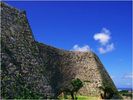
Nakagusuku Castle is part of a World Heritage Site of Okinawan gusuku castles. This is a view looking eastward from the base of the 3d enclosure (migusuku). Photos in this album all by Michael Lynch. Constructed in mid-fourteenth century of limestone rocks, placed without the use of mortar, Commodore Perry praised the construction technique on his visit to Okinawa in 1853.
|
|

World Heritage Marker. Photo copyright 2009 Michael Lynch.
|
|
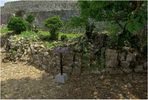
Sacred Site. There are eight special places of worship (Utaki) located within the castle walls. This view looks toward the East from the inside of the 1st enclosure. Photo copyright 2009 Michael Lynch.
|
|
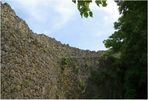
A view from the base of the West enclosure. Constructed in mid-fourteenth century of limestone rocks, placed without the use of mortar, Commodore Perry praised the construction technique on his visit to Okinawa in 1853. Photo copyright 2009 Michael Lynch.
|
|
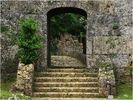
Rear Gate. Most visitors will enter through this gate to the castle, as it is closest to the parking and ticket sales. Photo copyright 2009 Michael Lynch.
|
|
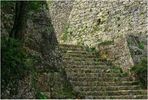
Stone Stairs. They lead to the 2nd enclosure. Visitors should wear sturdy walking shoes, as the stone-lined pathways and stairs can be very difficult to walk on without twisting an ankle. Photo copyright 2009 Michael Lynch.
|
|
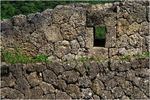
Gun Port. At several locations along the North walls of the castle, gun ports may be seen, where sentries could repel invaders. Photo copyright 2009 Michael Lynch.Many visitors are surprised to learn that firearms were in existence in the 14th century.
|
|
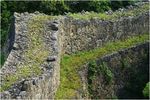
Terraced Walls. A view looking from north to south standing at an elevated point along the inner castle walls. Photo copyright 2009 Michael Lynch.
|
|

Three Sacred Sites. The South enclosure contains three Utaki (sacred sites), all within a small area, as seen by the signs in this picture. Many Okinawans come to worship at these Utaki and make offerings. Photo copyright 2009 Michael Lynch.From the high ground to the left of this scene, you may be able to see Kudaka-Jima, where locals believe the first Okinawans originated.
|
|

Boat for Taketomi at Ishigaki Port.
|
|
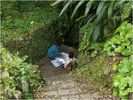
Sacred Well. There are three spring-fed wells within the castle. This one is located in the West enclosure and is also a sacred site where people make ritual offerings. Photo copyright 2009 Michael Lynch.The woman on the left gave consent to take a photo after helping her down the rough, stone stairs.
|
|

Several groups perform along the main road on the east side of JR Shinjuku Station. This is in front of Isetan Dept. Store.
|
|

On Taketomi, the best way to get around.
|
|
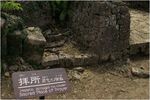
Utaki. A closeup view of a place of worship. Incense is sometimes burned and coins placed in the stone container centered within the utaki stone walls. Photo copyright 2009 Michael Lynch.
|
|

A large crowd watches as the crowd-pleasing drummers bring a bit of Okinawa to central Tokyo.
|
|
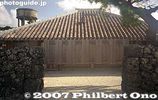
Okinawan house, Taketomi. Taketomi is a National Important Traditional Townscape Preservation District (重要伝統的建造物群保存地区).
|
|
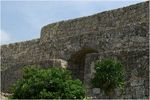
Second Enclosure. A view of the archway and stone construction from inside the 2nd enclosure, looking East. Photo copyright 2009 Michael Lynch.
|
|

Many women drummers also perform. Shinjuku Eisa Matsuri, Tokyo
|
|
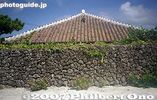
Okinawan house and rock wall, Taketomi
|
|
|

Lookout tower
|
|

Shinjuku Eisa Matsuri, Tokyo
|
|

On Taketomi, residential homes are toward the middle of the island, not along the beaches. The middle part of the island is built on hard rock called chert. Freshwater wells can be dug along this rock to provide water. View from lookout tower.
|
|
|
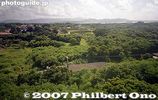
Outside the middle part of Taketomi, the ground is on limestone where water seeps through. Difficult to have rice paddies or wells on limestone.
|
|
|
|
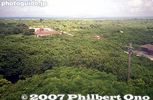
View from lookout tower
|
|
|
|
|
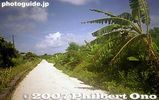
White coral road
|
|

Hand drum
|
|
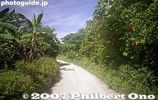
White coral road, one of Taketomi's trademarks.
|
|
|
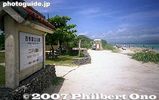
Kondoi Picnic Site
|
|

Infectious Okinawan beat. Shinjuku Eisa Matsuri, Tokyo
|
|
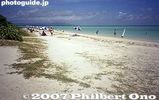
Kondoi beach
|
|
|
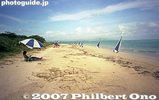
Be aware that these parasols are not free.
|
|
|
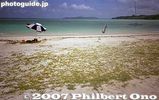
Kondoi beach
|
|
|
|
|
|
|

Dancing in front of JR Shinjuku Station, East side
|
|
|
|

Hoshi Sunahama or Star Sand Beach
|
|
|
|

Taketomi Primary School
|
|

Smoking dragon dance
|
|
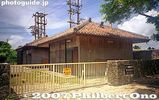
Power voltage station
|
|
|

Taketomi Port boat for Ishigaki
|
|
|
|

Very popular festival and well-worth seeing.
|
|
|
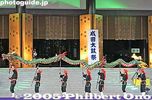
Taiko troupe from OkinawaThis group stole the show with a dragon dance, lion dogs, and eisa taiko drummers.
|
|
|
|
|
|
|
|
|
|
|
|
|
|

My video of Okinawan dances like yotsudake and a karate dance.
|
|

Yotsudake, Okinawa's most famous dance. 四つ竹
|
|

Dancer: Nariko Miyagi
|
|

Okinawan kimono called the bingata, perhaps Okinawa's most famous kimono. The design is made by applying dyes through a stencil.It was originally worn by Okinawa's royal family members. It is now the costume of a slow-moving Okinawan dance called "Yotsudake."
Model: Maki Uyeunten
|
|

Back view of yotsudake dancers on stage.
|
|

This dance is called "Nuchibana" (flower lei) featuring a string of red and white flowers.Okinawan dancer wearing a kimono with her right arm exposed outside the sleeve. The dance is called "Nuchibana" (flower lei) featuring a string of red and white flowers. The dance expresses the feelings of a young woman in love.
|
|
|
|
|

Dancer: Nariko Miyagi
|
|
|
|
|
|
|
|
|
|
|
|

Banna Park on Banna Hill (230m elevation) in the northern fringe of central Ishigaki is a large nature & recreational park. This is one of the main lookout points. Named "Emerald Ocean Lookout Point" overlooking the city center and nearby isThis is in Zone B of the park along the Banna Skyline road. This photo was taken before the stargazing platform was built next to it. エメラルドの海を見る展望台
|
|

View of central Ishigaki from Banna Park.
|
|

View of central Ishigaki from Banna Park.
|
|

View of central Ishigaki from Banna Park.
|
|

View of central Ishigaki from Banna Park. Taketomi Island can be seen on upper right.
|
|

View of Sakieda Peninsula from Banna Park.
|
|

View of Sakieda Peninsula from Banna Park.
|
|

View of the mountains north of Banna Park.
|
|

View of the mountains north of Banna Park.
|
|

Rest house in Banna Park. It's a large park with a variety of sights, playgrounds, lookout points, and nature.
|
|
|
|

Bird of Paradise flower in Banna Park.
|
|

Butterfly in Banna Park.
|
|
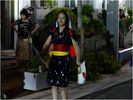
Eisa dancing is performed on the streets at night in every village on Okinawa during the three days of Obon, late in August. Here a young lady dressed in traditional Okinawan yukata (an informal kimono) marches while waving Rising Sun paper fans.Photo copyright 2009 Michael Lynch.
|
|
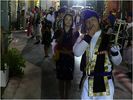
During each brief pause in the Eisa music, the men make a loud whistling noise that is distinctly Okinawan. All photos copyright 2009 Michael Lynch.Photo copyright 2009 Michael Lynch.
|
|
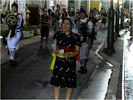
The Eisa dancers are all unmarried men and women between 20 and 30 years of age. The small handheld drums, known as Panraku, have the traditional symbol of Okinawa painted in gold on them.Photo copyright 2009 Michael Lynch.
|
|
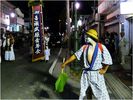
The Buffoon, Clown, or Town Drunk is a man who zig-zags through the line of dancers to the beat of his own drum, entertaining everyone and chasing evil spirits away.Photo copyright 2009 Michael Lynch.
|
|
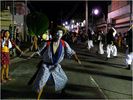
Here the Buffoon (called Gajangani) can be seen going in the opposite direction of all the other male dancers and waving a banana leaf. Some clowns carry bottles of sake and try to get bystanders to drink with them.Photo copyright 2009 Michael Lynch.
|
|
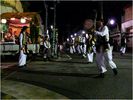
Each team of Eisa dancers has its own band riding in the back of a straw roof-covered truck. Sanshin (3 stringed instrument) players sing and play Okinawan folk music accompanied by CD’s blasted over a loudspeaker system. Photo copyright 2009 Michael Lynch.
|
|
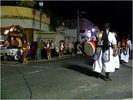
Different color yukata and uniforms of the dancers are worn, depending on which district or village they represent.Photo copyright 2009 Michael Lynch.
|
|

The large banner or flag carried on a bamboo pole is known as Hatagashisa and also represents a village or district. Each has their own unique design and the team takes pride in displaying it as a symbol of strength and prosperity for their hometown.Photo copyright 2009 Michael Lynch.
|
|
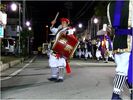
The large drum used for marching is slightly smaller than a Taiko and is called an Odaiko drum. The drummer in this photo is the only female player of this team to play such a large drum and she smiles and beats it enthusiastically.Photo copyright 2009 Michael Lynch.
|
|
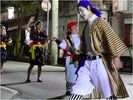
The brown and beige garment worn by this Buffoon is hand woven clothing called Bashofu. It is made from the fiber of banana plants. There may be two or three of these characters with each Eisa group skipping and weaving through the dancers as if they...The brown and beige garment worn by this Buffoon is hand woven clothing called Bashofu. It is made from the fiber of banana plants. There may be two or three of these characters with each Eisa group skipping and weaving through the dancers as if they weren’t there. Photo copyright 2009 Michael Lynch.
|
|
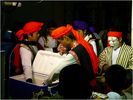
Here a group of men reach into a cooler for some refreshments while on a quick break from dancing. They will pile on trucks and move to the next location, performing Eisa dances well past midnight at every street, in every village for miles around.Photo copyright 2009 Michael Lynch.
|
|
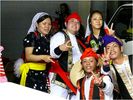
For their parting shot, these Eisa dancers couldn’t resist flashing the Peace sign along with their smiles for the camera. Photo copyright 2009 Michael Lynch.
|
|

Okinawa World is a fairly large theme park centering on a large underground cavern called Gyokusendo. Above ground, there are attractions featuring Okinawan culture including traditional architecture, traditional crafts, habu snake show, and Eisa drum show. Major tourist attraction in the southern part of Okinawa island.
|
|

To get to Okinawa World, I took a bus from Naha Bus Terminal. There are many buses and bus stops, so ask the bus information booth inside the bus terminal. Say where you want to go, and she will tell you which bus to take and where to get off.
|
|

For Okinawa World, take the No. 83 bus. The bus leaves only once or twice an hour and takes about 45 min.
|
|
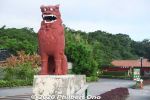
Seesaa at the entrance of Okinawa World.
|
|
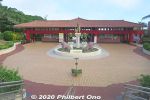
Okinawa World front gate.
|
|
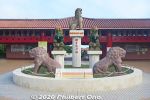
Okinawa World's front gate is decorated by five seesaa/shisa to ward off evil and bring in good fortune.
|
|
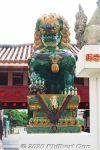
Chinese-style tri-color shisa with glazed finish. Made in China and originally decorated the Chinese Pavilion at the Tsukuba Expo '85 in Ibaraki Prefecture.
|
|
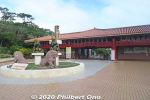
Okinawa World charges ¥2,000 admission. Open 9 am to 5 pm. Note that the park might be closed if there is a surge of Covid cases on Okinawa.
|
|
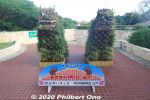
Pair of shisa after entering the Okinawa World gate.
|
|
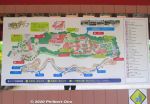
Map of Okinawa World. Many attractions above the cavern. When you buy your ticket, find out when the next habu snake show will be. See it first if it will start soon. See the habu show or cavern first which are near the front gate. Also find out the Eisa drum show time. Largest building is the shopping mall and restaurant complex which you can see last.
|
|
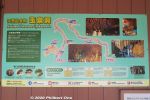
Map of Gyokusendo Cavern. Many natural features have names. After getting out of the cavern, you can go across the park toward the main gate and see the Kingdom Village.
|
|
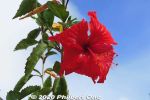
Red hibiscus at Okinawa World.
|
|
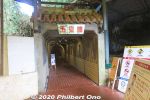
Entrance to Gyokusendo Cavern or Cave. 玉泉洞
|
|
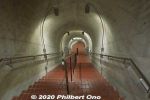
Steps down to Gyokusendo Cavern.
|
|
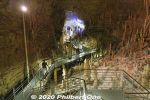
The main attraction of Okinawa World is Gyokusendo (玉泉洞), one of the largest limestone caverns in Japan. It's cooler in here (21˚C), so it's great in summer.This section is called Toyo Ichido. 東洋一洞
|
|
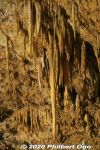
The part of the cavern open to the public is 890 meters long. Takes about 30 min. to walk through it. Diverse features and stalactites everywhere with colored lighting.
|
|
|
|
|
|
|
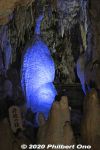
Lots of blue lighting.
|
|
|
|
|
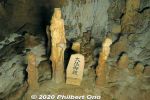
"Buddha statues"
|
|
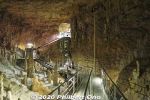
The cavern basically follows an underground stream. Tourists can walk on this walkway. It's always wet and water dripping.
|
|
|
|
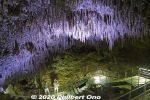
"Ceiling of Spears" 槍天井
|
|
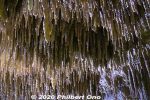
"Ceiling of Spears" 槍天井
|
|
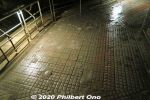
Ice on the walkway.
|
|
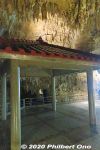
Rest house in a cavern.
|
|
|
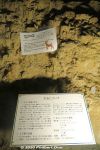
Deer bone fossils.
|
|
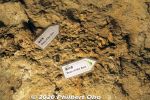
Deer bone fossils.
|
|

Where the stalactites are too long, they had to be cut to make way for tourists.
|
|
|
|
|
|
|
|
|
|
|
|
|
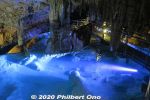
Inside Okinawa World's Gyokusendo Cavern, this is called the Blue Spring. Perhaps the prettiest spot of all. 青の泉
|
|
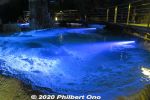
Blue Spring is also a limestone dam.
|
|
|
|
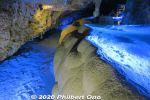
Blue Spring limestone dam.
|
|
|
|
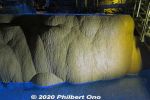
Golden rock
|
|
|
|
|
|
|
|
|
|
|
|
|
|
|
|
|
|
|
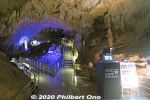
Take a selfie here.
|
|
|
|
|
|
|
|
|
|
|
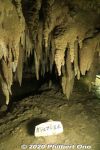
Banyan tree formation
|
|
|
|

Japanese mitten crab, one of the creatures that live in the cavern. モクズガニ
|
|

Freshwater goby, one of the creatures that live in the cavern. ヨシノボリ
|
|
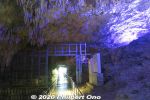
Nearing the cavern exit.
|
|
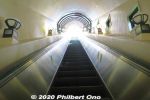
At the end of the Gyokusendo Cavern is a long escalator going back up to ground level for the exit.
|
|

Habu Museum Park is another major attraction of Okinawa World. Habu is a venomous pit viper endemic to the Okinawan and Amami islands. There are a number of species.
|
|
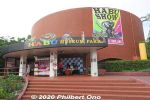
Habu Museum Park has an educational museum about the habu, a zoo of habu and other snakes, and a small hall for the habu snake show. First find out what time the next habu show will be.
|
|
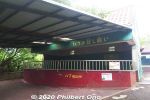
Habu zoo.
|
|
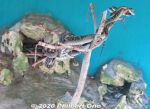
The Habu Museum has live habu on display. Nocturnal, so they were sleeping. Habu are venomous vipers in Okinawa.
|
|
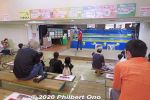
Also popular in Okinawa World is the Habu Museum Park and Habu Show. Habu is Okinawa's venomous snake. Habu Theater for the 20-min. habu show a few times/day.
|
|

Okinawa World's Habu show was interesting, but not particularly thrilling. The viper is not like a trained monkey doing tricks for a treat each time. The snake doesn't understand such a concept.
|
|

The trainer explained about the habu while handling it with a hooked pole.
|
|
|
|
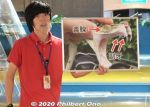
The habu's rear pair of fangs excrete the venom.
|
|

Habu's nostril, eyes, and pit.
|
|
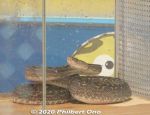
Habu ready to attack. If you see this pose, run away quick.
|
|
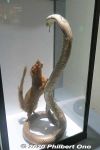
The trainer mentioned that in the past, they had a mongoose and habu snake fight each other in the show. But due to animal rights concerns, it was discontinued. These are only stuffed animals on display in the Habu Museum.The mongoose was introduced to Okinawa in 1910 to control the habu population. But the mongoose instead preyed on other native species.
|
|
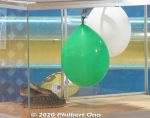
Two balloons to irritate the habu.
|
|
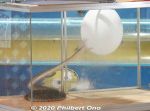
The habu didn't care for the white balloon, but went for the green one in a split second. Very dramatic...
|
|
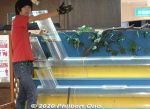
The stage also had two partially filled water tubes for the show's climax (?). This is the Snake and Mongoose Show. Instead of fighting each other, they race in the water.
|
|

In the tubes, it was a swimming race between a mongoose (upper tube) and habu (lower tube). They were both released into their tubes at the same time.
|
|

It was to see which would reach the other end of the tube first. The tubes were about 5 meters long.
|
|
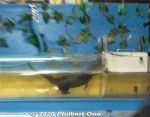
The mongoose immediately and hilariously swam through the tube, winning the race hands down.
|
|

The snake didn't understand it was a race and wandered back and forth in the tube until it finally reached the other end after correctly thinking that it was the way out. So that was the main highlight of the show...
|
|
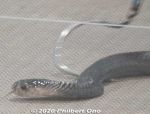
Also showed a cobra and tried to provoke it to show its expanded neck.
|
|
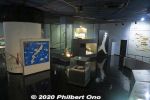
Habu Museum has many interesting exhibits about the habu. There's also some English.
|
|

Striking reach of the habu is much wider compared to a cobra. It's 360˚ all around. Watch out for it.
|
|
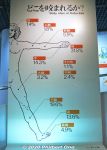
Where habu bites occur. Most common (31.8%) on the fingers, then the calf of your leg. Ouch!
|
|
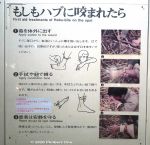
First-aid for a habu bite. Suck out the venom and spit it out.
|
|
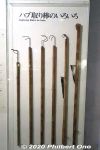
Hooked poles for catching habu. Habu are caught for making Habu-shu liquor.
|
|
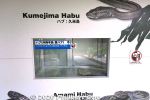
Exhibits of different species of habu. This one is from Kumejima island.
|
|

Habu viper from Kumejima.
|
|
|
|
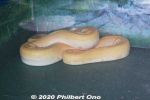
Boa constrictor.
|
|
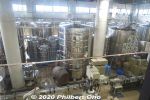
Inside Nanto Brewery producing habu-shu liquor. 南都酒造所
|
|
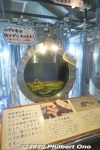
Brewing Habu liquor or habu-shu (ハブ酒) made with awamori or brandy.
|
|
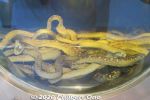
The extract from the snake supposed to be good for you. The snake's venom is somehow neutralized by the alcohol, so it's not poisonous when you drink it.So what do they do with the snake after drinking the habu-shu? Would a bird of prey eat an alcohol-soaked snake?
|
|
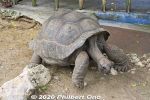
Old tortoise.
|
|
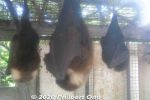
Bats sleeping.
|
|
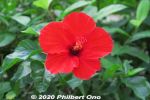
Red hibiscus.
|
|
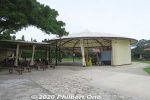
Eisa Plaza is where they perform the eisa drum show. エイサー広場
|
|
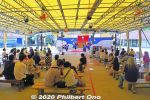
Super Eisa Show is performed three times a day for 30 min. スーパーエイサーショー
|
|
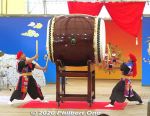
Large taiko drum.
|
|
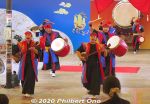
Okinawan Eisa drummers.
|
|
|
|
|
|
|
|
|
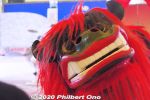
Okinawan shishi-mai lion dance.
|
|

Okinawan shishi-mai lion dance.
|
|
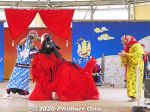
Okinawan shishi-mai lion drinking awamori.
|
|
|
|
|
|
|
|
|
|
|
|
|
|
|
|

Great show! Saw it twice.
|
|
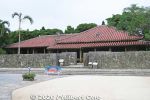
Okinawa World also has an architectural park called "Kingdom Village" with a few traditional Okinawan homes which were moved here. This is the grandest home, called the Uezu Residence 上州家
|
|

Uezu Residence is the grandest home in the park. Many of the homes are National Tangible Cultural Properties.上州家
|
|

Stone walls in front of Uezu residence.
|
|
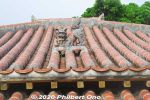
Shisa on the roof.
|
|
| 1578 files on 7 page(s) |
1 |
 |
 |
 |
 |
|